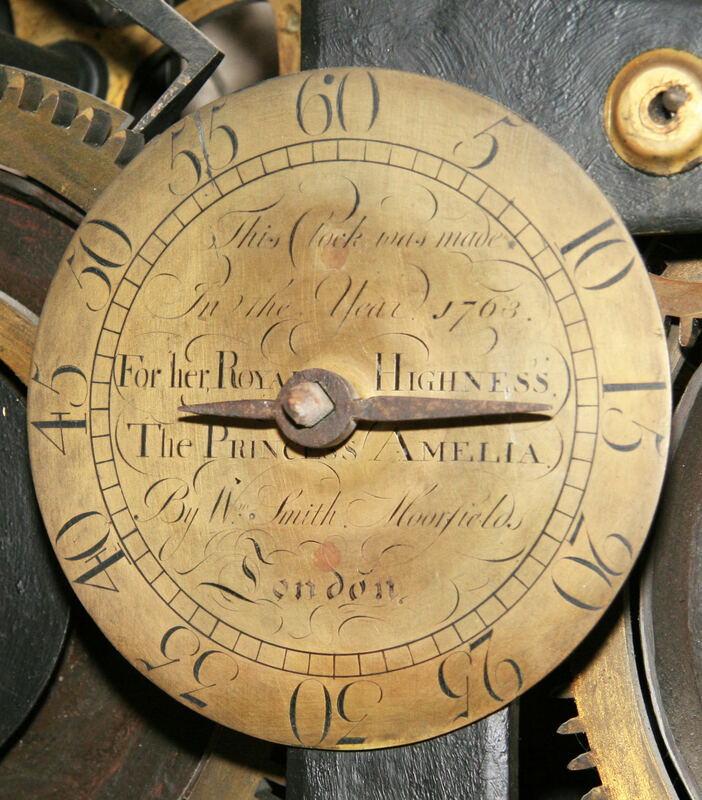 Figure 1: Pagoda-style movement of the Turret Clock at Newton Hall made by William Smith Figure 1: Pagoda-style movement of the Turret Clock at Newton Hall made by William Smith It is not very often I am asked to look at a Royal clock, in fact it is not often that I am asked to look at any clock. I was on a visit to Newton Hall, Northd., in the late 1970s when I noticed a turret clock in the stable block. I asked if I could see the movement of the clock and Captain Widdrington, the owner of the Hall agreed to show it to me. At that time I was not aware it was a Royal clock. Who expects to find a Royal Clock in the wilds of Northumberland? The dial of the clock was nothing out of the ordinary, in fact it looked rather in need of some restoration. My host took me up the rather rickety old steps in the corner of the stable into the loft where I was very surprised to see in the corner, a fine ‘Pagoda’ styled movement, with a deadbeat escapement and long pendulum, housed in a large wooden box ( fig.1). On the side of the box was a wooden plaque with the inscription “This clock was put up at Newton Hall in 1862, the gift of Frances Jacson.” Frances Jacson had lived in the Hall with her family until she married Shalcross Jacson of Bebington, Cheshire in 1819 and she presented the clock to her son Shalcross Fitzherbert Jacson in 1862. He had changed his name to Widdrington when he inherited the Hall in 1856 from his uncle. On closer inspection the setting dial on the front of the movement was engraved with the inscription(See figure 2 below). “This clock was made In the Year 1763 For her ROYAL HIGHNESS the PRINCESS AMELIA By W Smith Moorfields London.” Princess Amelia Sofia Eleanora was the eldest daughter of King George 11 and Queen Caroline, born at Herrenhausen, Germany on 10th June 1710. The family lived in Germany until George1 died in 1727. During the life time of George 11 she lived with her family but after her father’s death in 1760 she had a house in Cavendish Square and another at Gunnersbury Park. It is thought that the turret clock was originally set up at Gunnersbury Park. After Amelia’s death in 1786 the house was sold off and it was demolished in 1801 and replaced by two adjacent mansions, Gunnersbury Park and Gunnersbury House. The clock may have been set up in the new Gunnersbury Park but we do not know where it was until it was placed in Newton Hall in 1862. Earlier clocks made by William Smith from 1740-1758 usually had a four posted frame or birdcage movement, while his later clocks 1760-1768 had this Pagoda style frame. This may indicate that there were two different clockmakers working at the different periods or it may have been just one who changed his style of manufacture. The old Ackworth clock purchased by the Marquis of Rockingham and taken to Wentworth Woodhouse may have been one of William Smith’s early clocks but it does not have a maker’s name on it so we cannot be sure. However we can be sure who made this regal clock now at Newton Hall because it has both the makers name and the original owner’s name on the setting dial.
1 Comment
|
AuthorKeith Bates is an amateur horologist who has been researching clocks, watches and chronometers and their makers for over 30 years. Archives
August 2023
Categories
All
|


 RSS Feed
RSS Feed